Ignite curiosity and inspire learning with these fun, educational Top 5 Cool Science Experiments for School Students!
Science is an exciting journey of discovery, and for school students, hands-on experiments make learning even more enjoyable. These simple yet fascinating experiments are perfect for school projects or sparking an interest in STEM (Science, Technology, Engineering, Mathematics). Here’s a list of the Top 5 Cool Science Experiments that are easy to perform and deliver amazing results.

1. Volcano Eruption
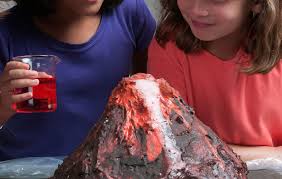
About the Experiment: The Volcano Eruption Experiment is a fun and educational activity that simulates a volcanic eruption using simple household ingredients. It demonstrates chemical reactions, specifically the reaction between an acid and a base, to create a foamy effect.
Category: Chemistry
What You Need:
- Baking soda
- Vinegar
- Dish soap
- Red food coloring
- A small container
How It Works: Combine baking soda, vinegar, dish soap, and red food coloring inside a container to mimic an erupting volcano. The chemical reaction between baking soda (a base) and vinegar (an acid) produces carbon dioxide gas, which causes the bubbly eruption.
Why It’s Cool: Students witness a dramatic, foaming “eruption,” learning about chemical reactions and gases. This project also introduces basic geology concepts.
Scientific Explanation: When vinegar (acid) reacts with baking soda (base), it produces carbon dioxide, gas, water, and sodium acetate. The carbon dioxide creates bubbles and foam, causing the liquid to overflow like lava in a volcanic eruption. The dish soap helps trap the gas, making the eruption more foamy and long-lasting.
2. Rainbow in a Glass
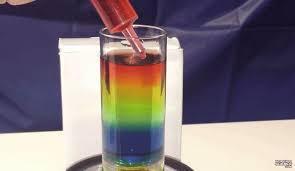
About the Experiment: The Rainbow in a Glass experiment is a fun and colorful science activity that demonstrates the concept of density using sugar water and food coloring. By carefully layering liquids of different densities, you can create a rainbow effect inside a glass.
Category: Density and Physics
What You Need:
- Sugar
- Water
- Food coloring
- Transparent glass
How It Works: Create sugar-water solutions with varying densities by adding different amounts of sugar to separate cups of water. Add food coloring for each layer and pour them carefully into the glass, starting with the densest solution.
Why It’s Cool: The result is a stunning rainbow in a glass, visually demonstrating how liquids with different densities stack without mixing.
Scientific Explanation: This experiment demonstrates the principle of density—a property that describes how much mass is in a given volume. The more sugar dissolved in water, the denser the solution becomes. Since liquids with different densities don’t mix easily, they form distinct layers, creating a rainbow effect.
3. Floating Egg Experiment
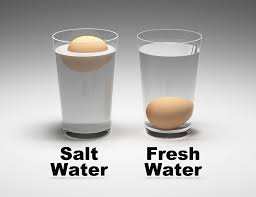
About the Experiment: The Floating Egg Experiment demonstrates the concept of density and buoyancy by showing how an egg can float in saltwater but sinks in plain water.
Category: Buoyancy and Density
What You Need:
- An egg
- Water
- Salt
How It Works: Fill a glass with water, place an egg inside, and watch it sink. Then, slowly add salt to the water, stirring until the egg starts floating. The salt increases the water’s density, causing the egg to rise.
Why It’s Cool: This simple experiment teaches the concept of density and buoyancy, encouraging students to think critically about real-world applications, like how ships float.
Scientific Explanation: In plain water, the egg sinks because its density is higher than that of the water. However, when salt is added, the water becomes denser. When the density of the saltwater exceeds that of the egg, the egg begins to float. This occurs because the increased density provides greater buoyant force, which lifts the egg. This principle explains why objects float more easily in saltwater than in freshwater.
4. Magic Milk Experiment
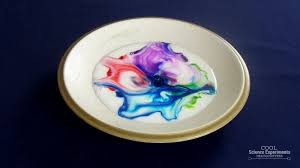
About the Experiment: The Magic Milk Experiment is a fun and colorful activity that demonstrates the interaction between surface tension and soap using milk and food coloring.
Category: Chemistry and Surface Tension
What You Need:
- Milk
- Food coloring
- Dish soap
- A shallow dish
How It Works: Pour milk into a shallow dish, add a few drops of food coloring, and then touch the surface lightly with a soapy cotton swab. Watch the colors explode into mesmerizing patterns.
Why It’s Cool: This experiment vividly shows how dish soap breaks the surface tension of milk and interacts with fats, creating vibrant color swirls.
Scientific Explanation: Milk contains water, fat, and proteins. When food coloring is added, it simply floats on the surface. However, when dish soap is introduced, it breaks the surface tension of the milk and interacts with the fat molecules. This causes the colors to swirl and move as the soap spreads, creating a vibrant, swirling effect. The reaction continues until the soap is evenly distributed in the milk. This experiment visually demonstrates how soap reduces surface tension and interacts with fats, similar to how it cleans grease from dishes.
5. Lemon-Powered Battery
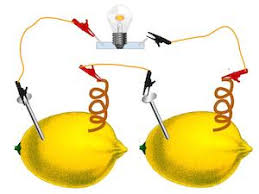
About the Experiment: The Lemon-Powered Battery experiment demonstrates how a chemical reaction can generate electricity using a lemon as a power source. This experiment showcases the principles of electrochemistry and how a simple battery works.
Category: Electricity and Chemistry
What You Need:
- Lemons
- Copper coins
- Zinc nails
- Wires
- LED light
How It Works: Insert a copper coin and zinc nail into each lemon and connect them with wires. Attach the wires to an LED light, and watch it glow. The acidic juice in lemons acts as an electrolyte, creating an electrical circuit.
Why It’s Cool: This eco-friendly experiment introduces students to the basics of electricity and circuits using everyday items.
Scientific Explanation: A lemon battery works through an electrochemical reaction between two different metals (zinc and copper) and the acidic juice inside the lemon. The zinc (from a galvanized nail) acts as the anode (negative terminal), while the copper (from a penny or copper wire) serves as the cathode (positive terminal).
When the metals are inserted into the lemon, the acidic juice acts as an electrolyte, allowing electrons to flow from the zinc to the copper. This movement of electrons creates an electric current, which can be used to power a small LED light or a digital clock. The experiment demonstrates how batteries convert chemical energy into electrical energy through oxidation and reduction reactions.
Tips for a Successful Science Experiment
- Safety First: Always have someone to supervise experiments, especially those involving chemicals.
- Understand the Concept: Search the science behind the experiment.
- Make It Fun: Engage your friends and turn experiments into friendly competitions or group activities.
Let us know which experiment you tried and how it turned out in the comments below!










